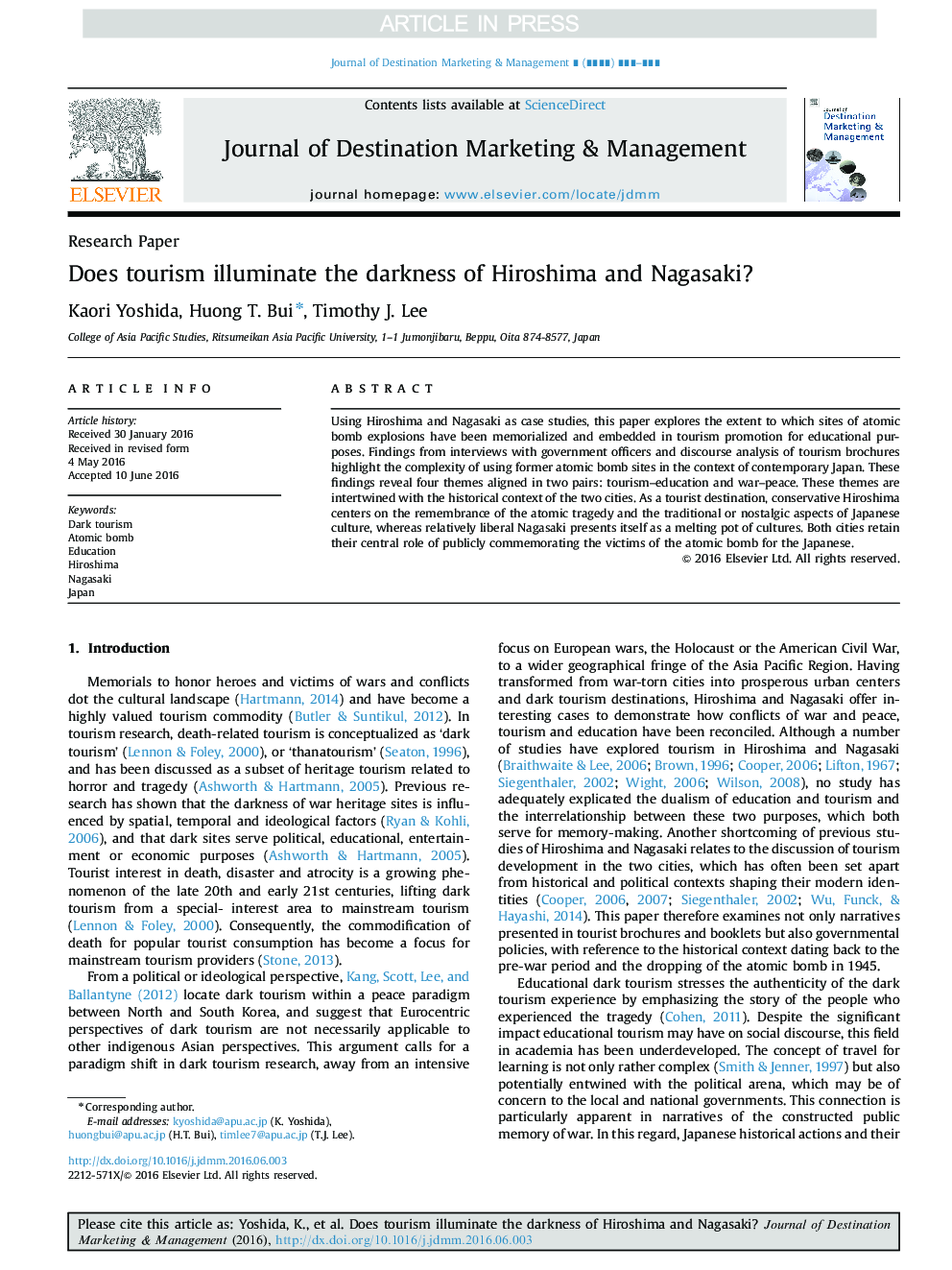| Article ID | Journal | Published Year | Pages | File Type |
|---|---|---|---|---|
| 5108315 | Journal of Destination Marketing & Management | 2016 | 8 Pages |
Abstract
Using Hiroshima and Nagasaki as case studies, this paper explores the extent to which sites of atomic bomb explosions have been memorialized and embedded in tourism promotion for educational purposes. Findings from interviews with government officers and discourse analysis of tourism brochures highlight the complexity of using former atomic bomb sites in the context of contemporary Japan. These findings reveal four themes aligned in two pairs: tourism-education and war-peace. These themes are intertwined with the historical context of the two cities. As a tourist destination, conservative Hiroshima centers on the remembrance of the atomic tragedy and the traditional or nostalgic aspects of Japanese culture, whereas relatively liberal Nagasaki presents itself as a melting pot of cultures. Both cities retain their central role of publicly commemorating the victims of the atomic bomb for the Japanese.
Related Topics
Social Sciences and Humanities
Business, Management and Accounting
Business, Management and Accounting (General)
Authors
Kaori Yoshida, Huong T. Bui, Timothy J. Lee,
